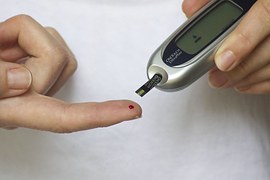Fat around the midsection, what we commonly refer to as belly fat or a spare tire, can be a dangerous predictor of major health complications, even in people who are not obese as defined by BMI.
How do we know that?
Here are a few published studies:
1. In this study published in the European Journal of Preventive Cardiology, the researchers concluded that abdominal obesity was common in post-myocardial infarction patients and a larger waist circumference was independently associated with recurrent atherosclerotic cardiovascular disease, particularly in men. They recommended utilising waist circumference to identify patients at increased risk of recurrent atherosclerotic cardiovascular disease after myocardial infarction.
2. Another study in the March 6, 2018 issue of the Journal of the American Heart Association involved about 500,000 people, ages 40 to 69, in the United Kingdom. The researchers took body measurements of the participants and then kept track of who had heart attacks over the next seven years. During that period, the women who carried more weight around their middles (measured by waist circumference, waist-to-hip ratio, or waist-to-height ratio) had a 10% to 20% greater risk of heart attack than women who were just heavier over all (measured by body mass index, or BMI, a calculation of weight in relation to height). The authors concluded: “Our findings support the notion that having proportionally more fat around the abdomen (a characteristic of the apple shape) appears to be more hazardous than more visceral fat, which is generally stored around the hips (the pear shape).”
3. Another study in the Journal of the American Heart Association concluded that waist circumference is an independent risk factor for hypertension, but skinfold thickness (total body fat revealed by BMI) was a poor marker of body fat and could not be used to predict hypertension.
There are many more, but you get the idea.
Why is belly fat dangerous?
In addition to heart disease, belly fat increases risk for diabetes, cancer and stroke. This happens because the excess visceral fat triggers a low-level inflammation in the body, which is why it can lead to chronic disease and faster ageing.
Why does belly fat develop?
- Incorrect balance of nutrients and excess Insulin: Our diet is preponderant in carbohydrate content. This can lead to insulin resistance. Insulin is an obesogenic hormone – it promotes obesity – and it leads the body to store the excess carbs in the liver and in the visceral tissue.

- Cortisol – Stress causes the secretion of the hormone, cortisol. Compared with subcutaneous fat, abdominal fat cells have four times more cortisol receptors; hence the excess stored fat is directed to our middle.
- Sedentary habits: The carbohydrates we consume are not ‘used up’ and get stored as fat.
What to do?
- Correct the diet: Get in touch with someone who can provide the right guidance. This post provides a detailed guide to structuring a healthy eating plan: https://drlilykiswani.com/what-should-i-eat/.
- Stress management: Practices such as meditation help lower cortisol levels and decrease inflammation in the body.
- Sleep: This study showed that In those younger than 40 years, ≤5 h of sleep led to a greater accumulation of fat compared to sleep duration between 6 and 7 h.
- Get off that chair! Keep moving. Even if it is just walking, even if it is in short bursts, it still helps burn off the carbs. Not just calories, mind. Burn carbs.
What doesn’t work?
Doing ab exercises! Crunches will help tone the abdominal muscles but will do nothing to target the belly fat underneath. So stop punishing yourself and focus on what works.
Simple steps, performed consistently, and you can transform your health and get that six-pack!

Images from Unsplash.


